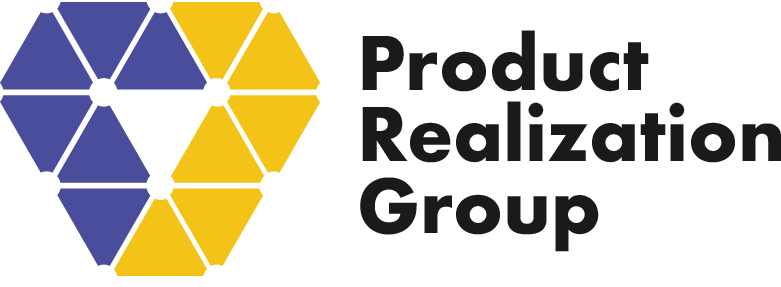
An Interview with James Blackwell, CTO and Co-founder of Roost Inc.

James Blackwell is a wireless industry veteran with over 25 years of leadership experience in the design and manufacturing of Bluetooth and Wi-Fi systems, including CSR and Ozmo Devices.
The journey from conceptualizing a hardware-based product to successfully scaling it can be daunting and complex, fraught with various challenges. We are privileged to gain insights from an experienced professional who has experience successfully launching new hardware products. James Blackwell, CTO and Co-founder of Roost Inc. brings a wealth of knowledge and firsthand experience to the table.
In this interview, Blackwell reflects on his journey bringing hardware-based products to market and sheds light on two significant hurdles that impact product launches: the complex process of plastic design and tooling and the critical importance of identifying the right manufacturing partner. Through their unique experiences and expertise, we gain a deeper understanding of these challenges and the team’s strategies to overcome them.
Reflecting on your hardware-based product realization journeys from concept to scale, what have you found to be the most pivotal challenges encountered, specifically those that had the most significant impact on the success of your product launch?
There are many challenges associated with taking an idea from concept to product, but the two that stand out for me are:
First, plastic design and tooling take time. It always takes longer than you expect and requires more iterations and tweaks than you would like. To stand any chance of hitting realistic product launch dates, starting the Industrial Design process as early as possible is imperative. It is always in the critical path of any of our developments. The hardware and firmware were ready long before the plastics were available on our first product, and this caught us off guard.
3D printing and rapid prototyping can keep you moving forward during the development cycle. Still, for cost-effective production, the plastic tooling must be ready well before production. Through our experiences, we’ve learned that kicking off the Industrial Design (ID) ideation process as soon as possible for a new product is one of the keys to getting to manufacturing sooner rather than later. For us, it often starts immediately after the first draft of the product requirements is approved.
Identifying the right manufacturing partner as early as possible is key to a project’s success – preferably before the design and engineering work starts. Finding the right partner and getting their input early in the design process will ensure the final product is manufacturable. Designing the product first and then finding the manufacturing partner later will likely result in either an unbuildable product that needs redesigning or will require a higher-cost manufacturing process.
Second, finding a manufacturing partner complementary to your team’s skills is also essential. In my experience, there are two types of manufacturing partners: ones who build the product based on the designs you give them without deviation and those who help you design the product throughout its lifecycle by offering additional services like design for manufacturing, component selection, engineering services, etc.
The first type of manufacturer is well-matched if your company has all the requisite skills to develop and deliver a product or if the product is a well-established design. These manufacturers will build the design you give them, but if it doesn’t work – the onus will be on you to resolve the issues.
The second type of manufacturer is better suited to the smaller start-ups who may not have all the specific skills in-house or on hand. These manufacturers will help you with the design and component selection by providing resources to fill these gaps. The added benefit is that the final design will be something the manufacturer can build more repeatedly and at a higher quality level. This additional support is often free, deeply discounted, or can be amortized across production runs to help defer the cost.
Time spent selecting the right manufacturing partner upfront is time well spent.
What impact did the above challenges have on your business? Could you share the strategies you applied or your critical modifications in navigating through them?
The impact of both these challenges is project delay. Thankfully, we engaged with PRG early in our development, and they helped us identify our weaknesses and put together plans to plug those gaps.
For example, PRG suggested finding the right manufacturing partner early. We knew we’d need a contract manufacturer at some point, but at that time, all our focus was on developing the idea into a feasible product. After all, that was the fun part we were all comfortable with. We decided to find a manufacturer after we completed the design.
But, with PRG’s support, we refocused some of our efforts on finding the manufacturer sooner rather than later. With their guidance and assistance, we developed a list of requirements we were looking for in a manufacturing partner, a set of questions, and a scorecard to assess, grade, and select the right partner for our business.
We used this approach to interview, inspect, and score more than 15 manufacturers worldwide before settling on the right partner for us. And nearly ten years later, we are still using that partner.
The level of support we have received from them over the years is not something we could have appreciated during our initial factory tours. We would probably not be in business today if we stayed with our original plan.
Given the prolonged lead times for electronic components and the increasing risks in supply chains, how does your organization stay responsive and adaptable to customer feedback and evolving product requirements?
Issues with component lead times are a recurring theme in the electronics industry and often have a periodic cycle. If you come from a different background or industry, this may surprise you, but let me assure you that it’s happened many times before and will happen again.
The worst word you can hear from any of your suppliers is ‘allocation’; this is usually a euphemism for ‘we don’t have enough components to meet our current orders.’ And if they say it to you, it means ‘we’re giving your components to one of our more important customers.’
As a smaller start-up, you must get used to being at the bottom of the pile. Suppliers are used to hearing how yours will be the better mousetrap, and you’ll be selling them by millions. As a result, they are very good at ignoring such stories until you sell them by the millions; even then, depending on the component and where else it is used, they may still ignore it!
The best way to mitigate supply issues is to look at each component in your bill of materials and identify if they are unique to a supplier or a commodity for multiple suppliers. If they fall into the latter category, try to design your product from the get-go with the option to use several suppliers. Sometimes, this requires little work as the components are easily interchangeable. Other times, it might require some foresight to include multiple footprints on a PCB to take different suppliers’ parts.
You must pay special attention to the components you decide are unique to a supplier. You have no alternate source should the market turn against you. The best approach to managing these components is to provide the supplier with the best and most accurate forecast you can and as far out as you feel comfortable. It’s not uncommon for lead times to stretch out to more than a year in tough times. Suppose you have a history of providing accurate forecasts. In that case, it is more likely that the supplier will be able to supply your needs – because they know you are reliable and consistent, they will build your demand into their forecast model. When suppliers try to manage lead time issues, they always try to judge how much inventory they need to allocate. A solid track record of consistency will guarantee that you receive more products than companies with less consistent forecasts.
It’s not uncommon for small companies to rely on their manufacturing partner for forecasting and placing orders with suppliers for components, but I recommend that you start to develop a relationship directly with the suppliers of your critical components. Talking with them, reviewing your forecasts regularly, and reminding them which orders your contract manufacturer is placing will also help when the next crunch hits. Without that relationship, your voice won’t be heard when the crunch arrives.
In this conversation with Blackwell, we’ve explored the key challenges that define hardware product development. Through his insights, we’ve discussed the challenges faced from concept to product scale, the time-consuming nature of plastic design and tooling, and the critical role of choosing the right manufacturing partner. Moreover, we’ve discovered that by embracing strategic planning, proactive partnership development, and building a strong relationship with suppliers, one can successfully navigate these obstacles to ensure a shorter as well as smoother path to product launch.
Roost is disrupting the traditional property insurance model through its “Property Telematics” suite of solutions providing peace of mind to property owners and rich data to insurers. Learn more at getroost.com


